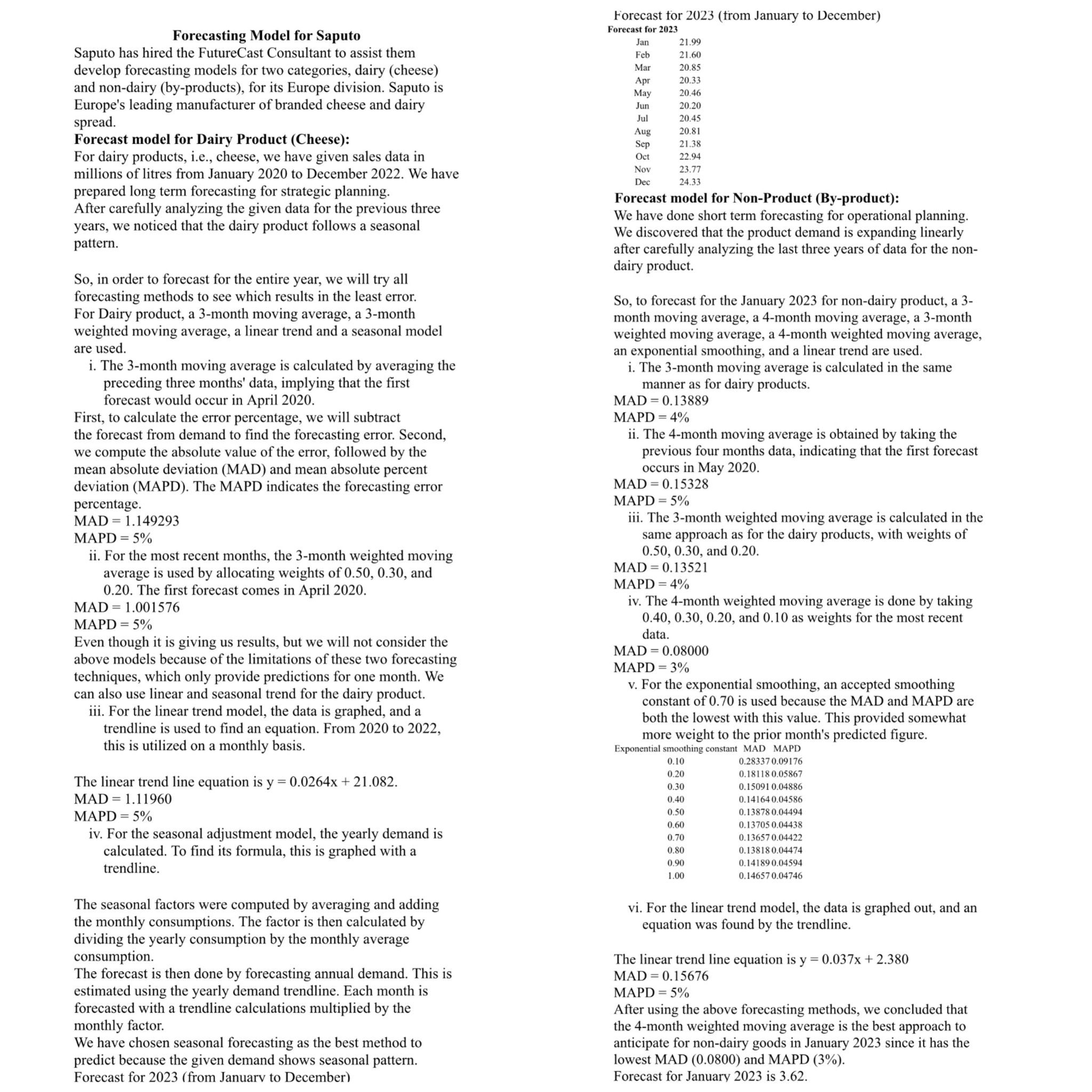Question
In September 1954, using $500 to buy some basic equipment and a bicycle for deliveries, the Saputo family founded the company in Montreal bearing their
In September 1954, using $500 to buy some basic equipment and a bicycle for deliveries, the Saputo family founded the company in Montreal bearing their name. Today, Saputo produces, markets, and distributes a range of food products, including cheese, milk, yogurt, and dairy ingredients. Saputo is the largest dairy processor in Canada, and is among the 10 largest in the world, including the largest in Australia, the second-largest in Argentina, and among the top three cheese producers in the United States. With 67 manufacturing facilities, 70 distribution centres, and approximately 18,600 employees around the world, Saputo's products are sold in more than 60 countries. The company processes approximately 11 billion litres of raw milk per year, and remains focused on being better and stronger through optimization of its activities, product innovation, and acquisitions. One of the ways that Saputo plans on increasing its efficiencies is by investing in sales and operational planning processes, and one of the keys to doing this is forecasting. By improving its forecasting, the company will use plant, distribution, and transportation resources more effectively, resulting in cost reductions and enhanced customer service. In the coming years, Saputo and other dairy processors will need to focus on creating innovative dairy products that match the changing nutritional needs of consumers, who are becoming increasingly sophisticated. With the strong and growing dairy products market, Saputo sees opportunities to penetrate new markets and improve sales in existing core markets. Understanding customers, as well as the operational requirements of doing so efficiently, are at the heart of a demand-forecasting review process. With demand growth in mind, the goal is to be a distribution and logistics provider with superior levels of service and performance that is as cost efficient as possible. Saputo operates their business through five geographic divisions: 1. Canada
2. USA
3. Europe
4. Argentina
5. Australia
Saputo groups their portfolio of products into five categories:
1. Cheese
2. Dairy foods
3. Milk
4. By-Products / Ingredients
5. Non-Dairy Products
Additional information:
about Saputo is available on the Investor Factsheet and the Corporate Presentation available in the Project folder, or at saputo.com. Saputo. (2022, August 3)
https://www.saputo.com/en/investors
PROJECT REQUIREMENTS
Saputo has engaged your consulting firm to help them develop forecasting models for two products from one of their geographic divisions. The division and products which have been assigned to your firm are included in the file: One of the forecasting models will be used for longer-range budgeting and strategic planning, while the other will be used for shorter-term operations planning. The Excel file also contains historical sales data for each product (monthly from Jan. 2020 - Dec. 2022). Units of measure for the data are in 'millions of litres equivalent' (for comparison purposes, all products are described in the same units of measurement based on how much raw material milk is required to produce the sales volume for the given product). Note that the data provided is for educational purposes only, and does not reflect actual Saputo sales. Your firm's task is to develop an appropriate forecasting model for each product for the purpose specified, and then to use the models to forecast sales demand for the time period specified.
a written report
(a) Summarize the process used to determine each forecasting model, including:
? A description of the forecasting models recommended.
? An explanation of why the forecasting models are recommended.
? Any other models which were considered, and why they were not recommended.
(b) State the forecasts:
? Based on the recommended models, provide the forecast for the time period specified for each product.
(c) Describe potential forecast adjustments to consider:
? Per step 9 of the forecasting process, describe any adjustments to the forecast you would consider and/or recommend, based on qualitative information or insight.
? Feel free to conduct external research on current information or trends for food products for the countries and/or products which have been assigned to your firm.

Step by Step Solution
There are 3 Steps involved in it
Step: 1

Get Instant Access to Expert-Tailored Solutions
See step-by-step solutions with expert insights and AI powered tools for academic success
Step: 2

Step: 3

Ace Your Homework with AI
Get the answers you need in no time with our AI-driven, step-by-step assistance
Get Started


